How to Draw a Fighter Jet
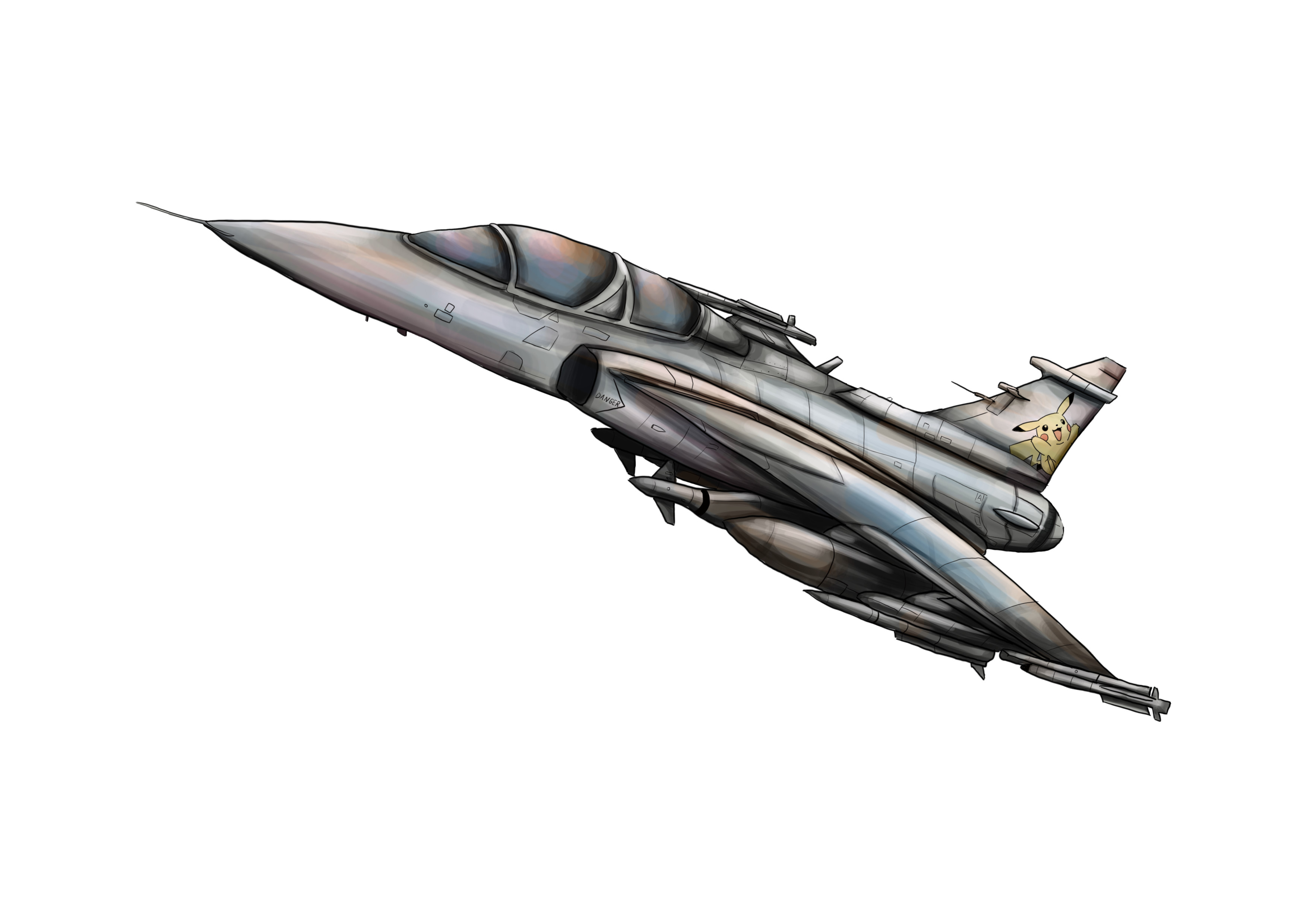
As promised in the article for learning to draw a plane, here is the tutorial for drawing a fighter jet.
Despite their differences in use, they remain quite similar in terms of shape and composition. However, it can be noted that the fighter jet has a more "designed" silhouette and some additional elements compared to the airliner.
Before drawing a fighter jet, I recommend first learning to draw a commercial airliner. Since it is simpler, with fewer details and primarily having the basic silhouette of the fighter jet, it will make things easier for you later on.
So, as I was saying, both the airliner and the fighter jet have the same base. See for yourself:
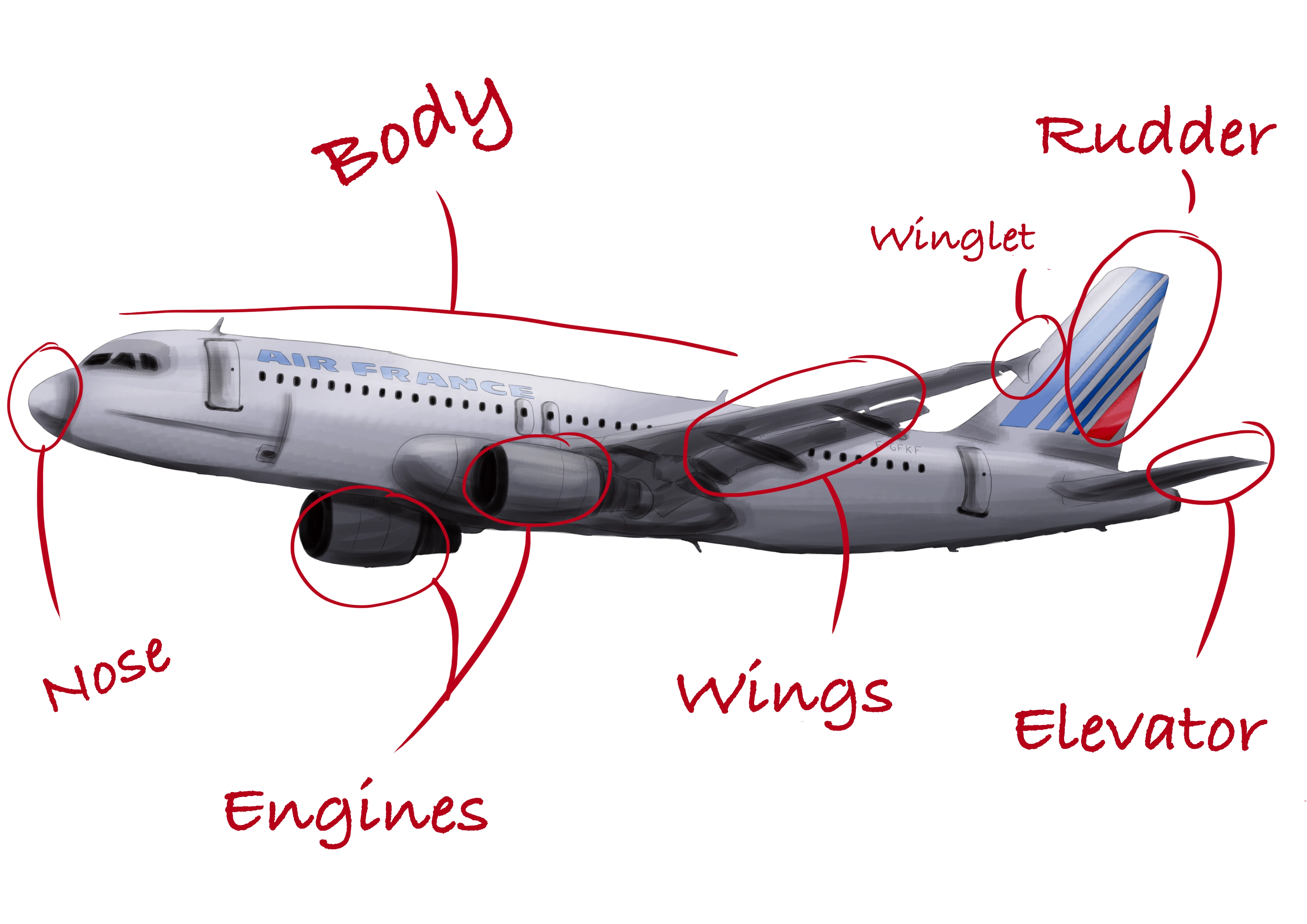
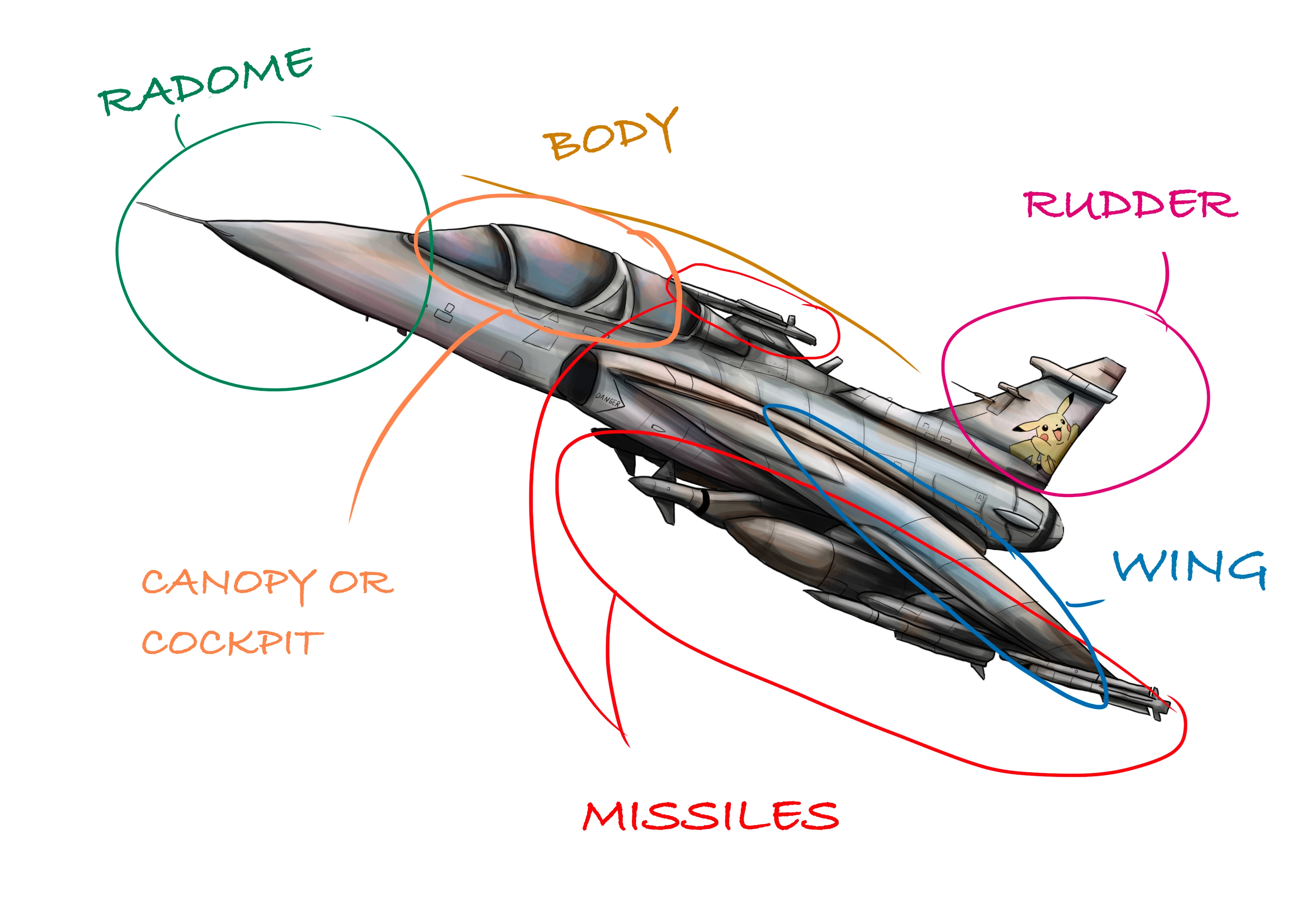
Even if some elements do not have the same name or are different sizes, the base is the same. We have a "nose," a "body," and a "tail." The wings are in the middle of the "body."
In these two diagrams, I've only included the main names. There are far more elements than this on an airplane, but since we're not going to get into the very fine details, it's not necessary for me to fill your head with names that won't be useful for drawing!
To draw the fighter jet, we will start with the same method we used for the airliner. We will begin by roughly sketching the base and then move into the details little by little.
Without further ado, let's get started :)
DRAWING A FIGHTER JET STEP BY STEP
To begin, draw the body of the plane. Draw a tube that starts out thick and ends a bit thinner.
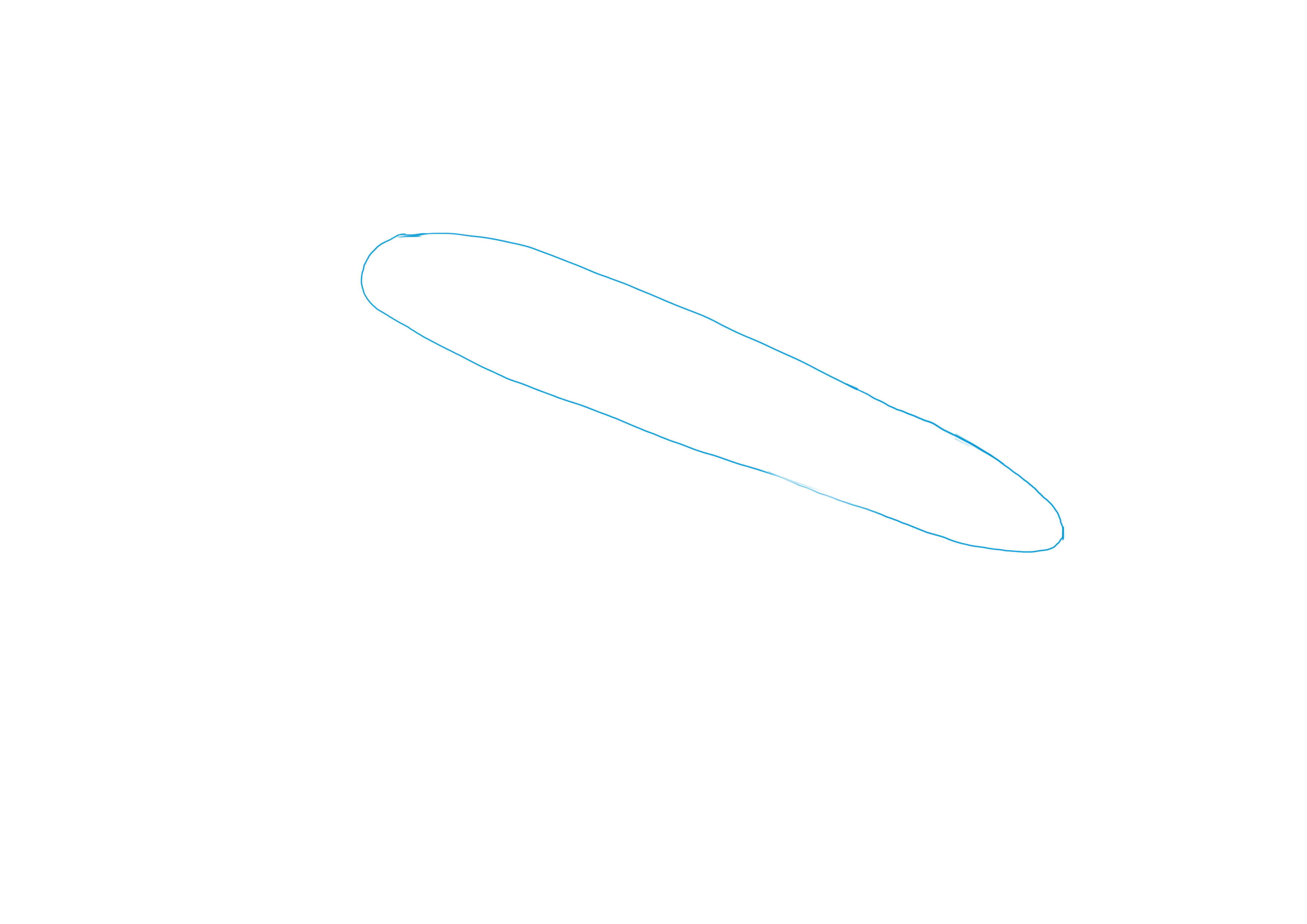
Then draw the radome (nose). To do this, start from the front of the fuselage and make a curve that ends in a point.
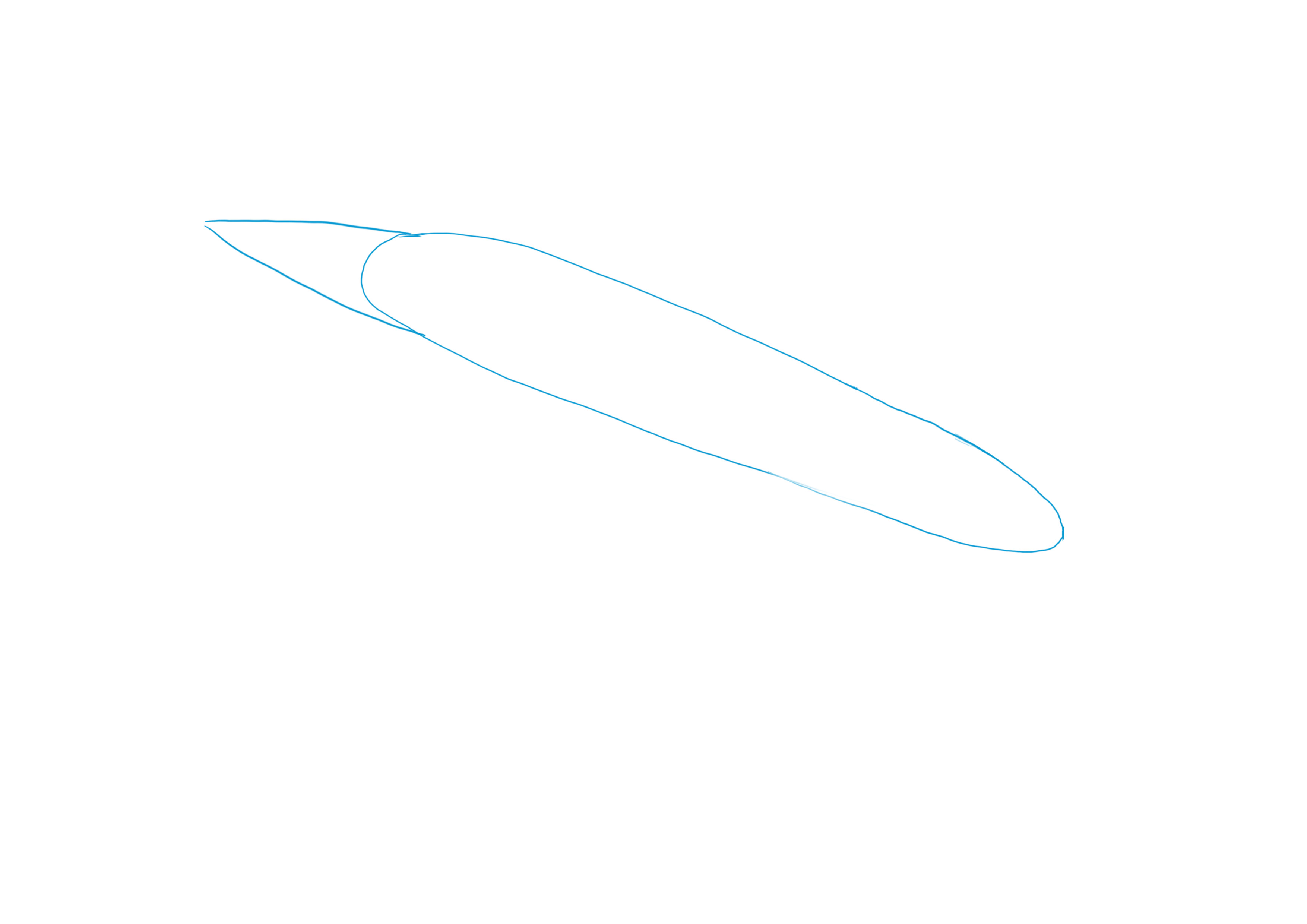
We will continue with the canopy and the directional rudder. To draw the canopy, start at the intersection of the radome and the fuselage and then draw a flattened oval that follows the direction of the Fuselage. For the directional rudder, start from the rear of the fuselage and draw a triangle.
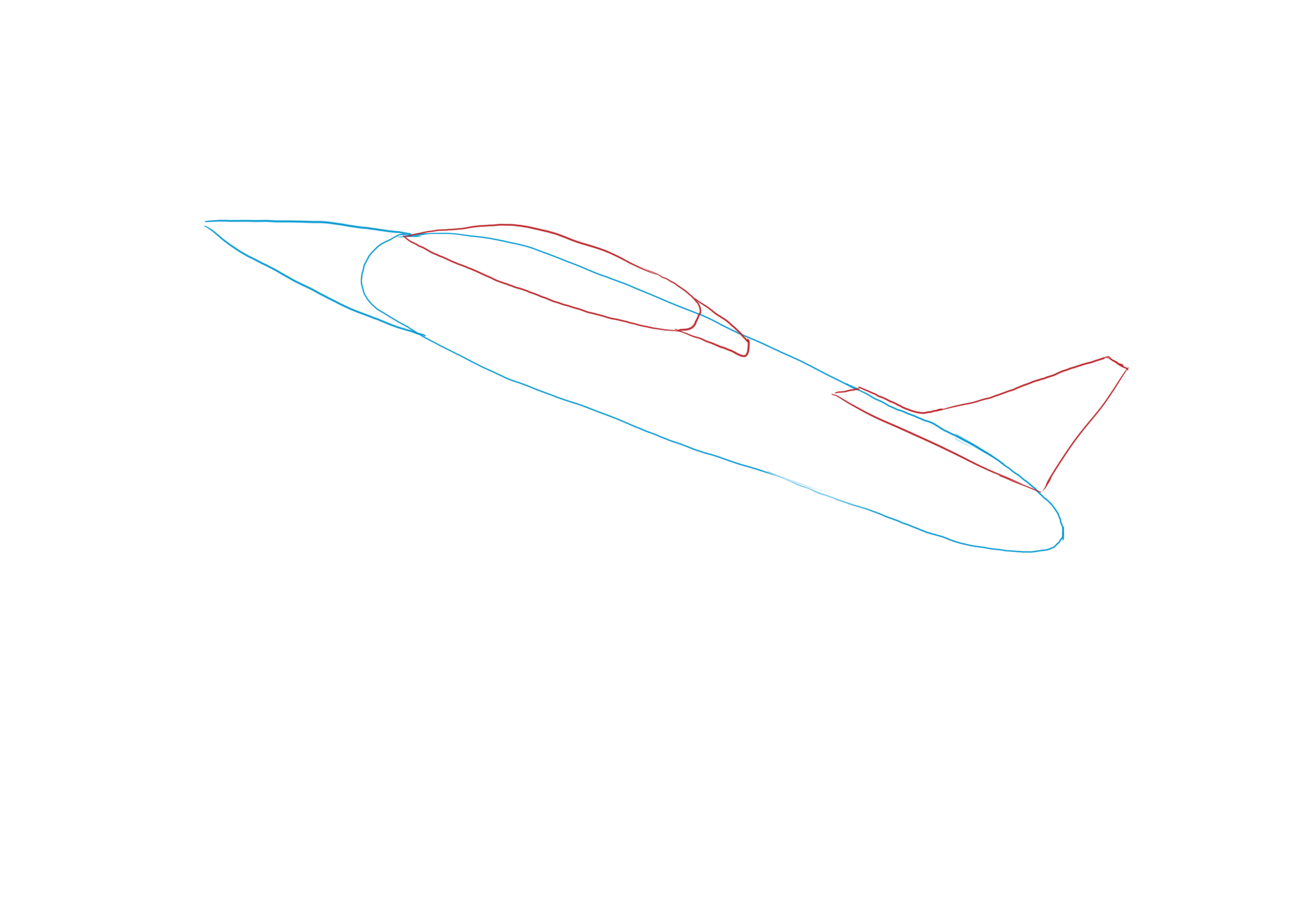
To draw the wings, first draw a rectangle starting from the middle of the cockpit to the tail of the airplane. This rectangle should be slightly curved. It's the part that connects the wing to the body of the airplane. Once the rectangle is drawn, draw the wing. To do this, draw a trapezoid with the upper width larger than the lower width, to give it the effect of perspective.
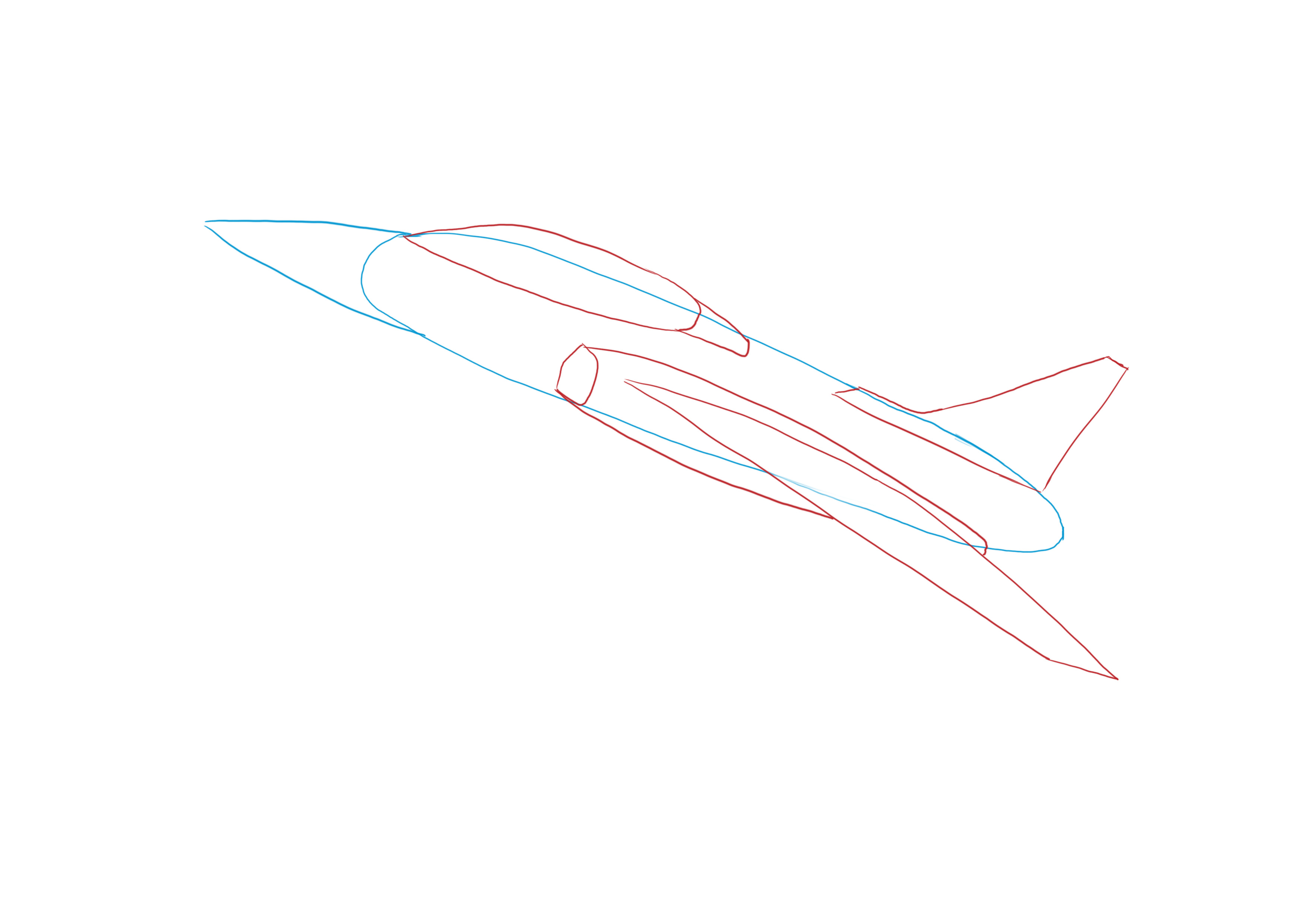
Now that the main body is done, we are going to draw the smaller parts. Let's start with the missiles. They consist of two parts. There are those in the foreground, those in the background, and those on the back of the plane. We will start with those in the foreground. They're very simple to draw. They are just tubes that end in a point at the front.
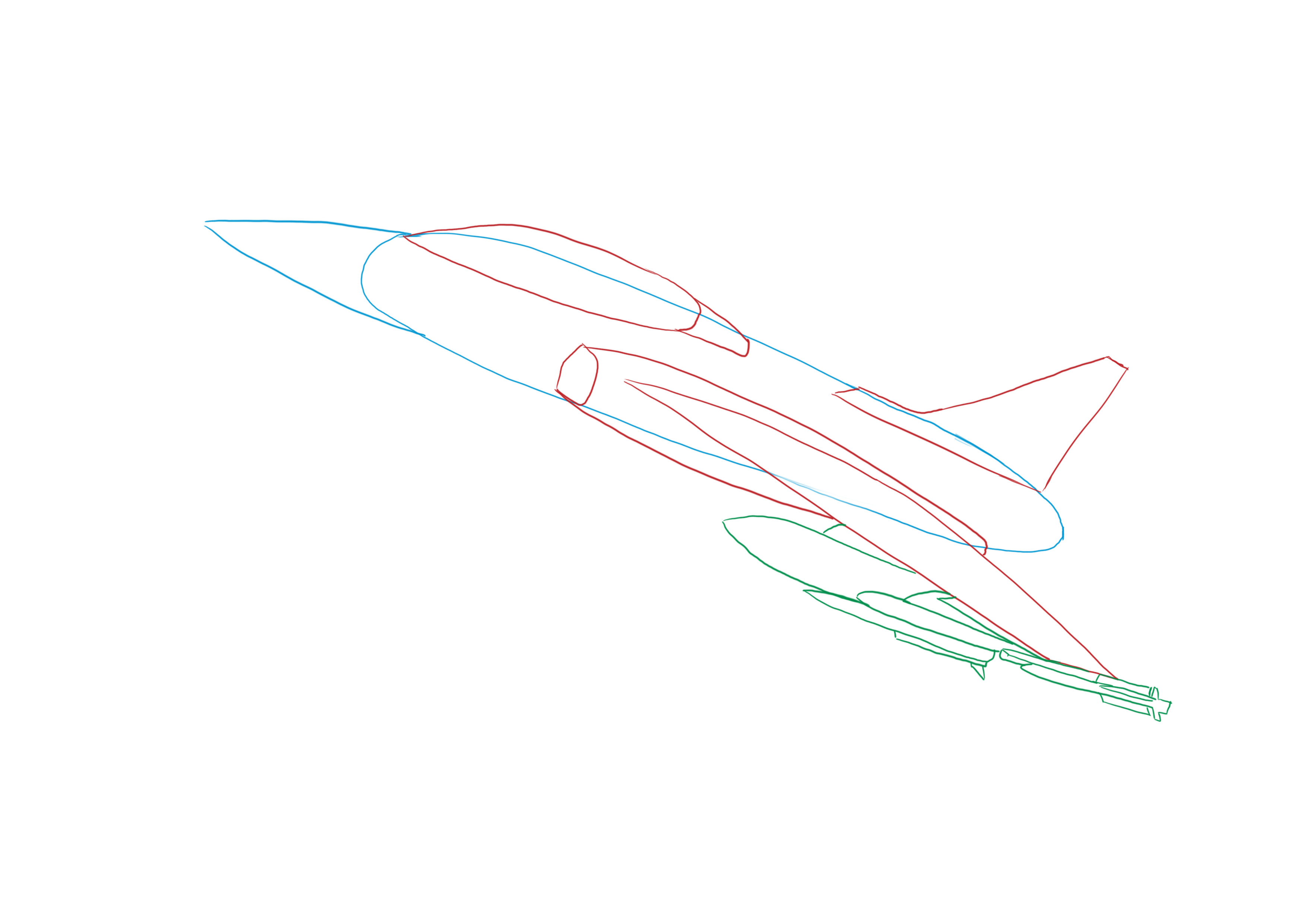
Then, draw the missiles that are in the background.
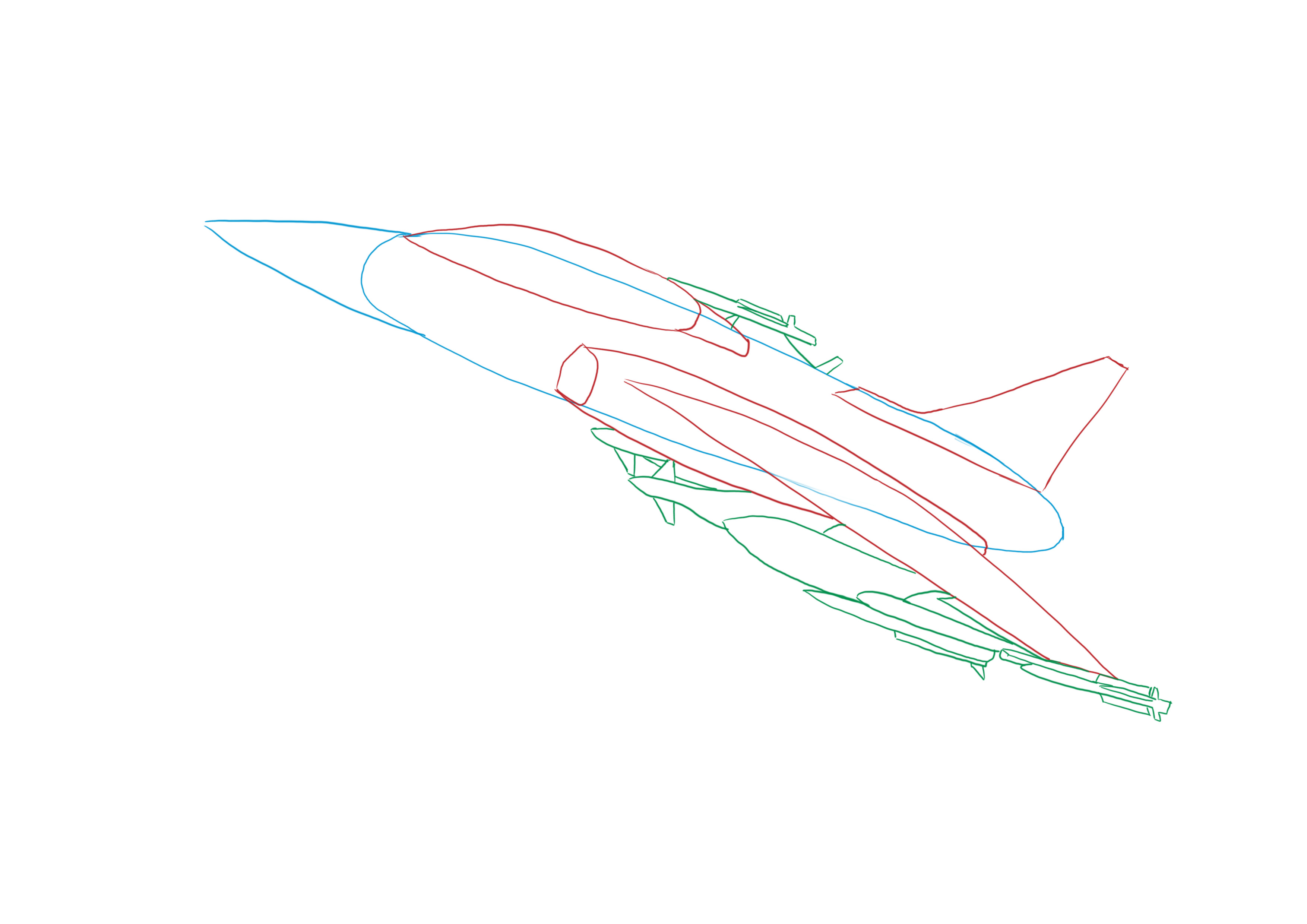
Finish by adding some details such as reliefs.
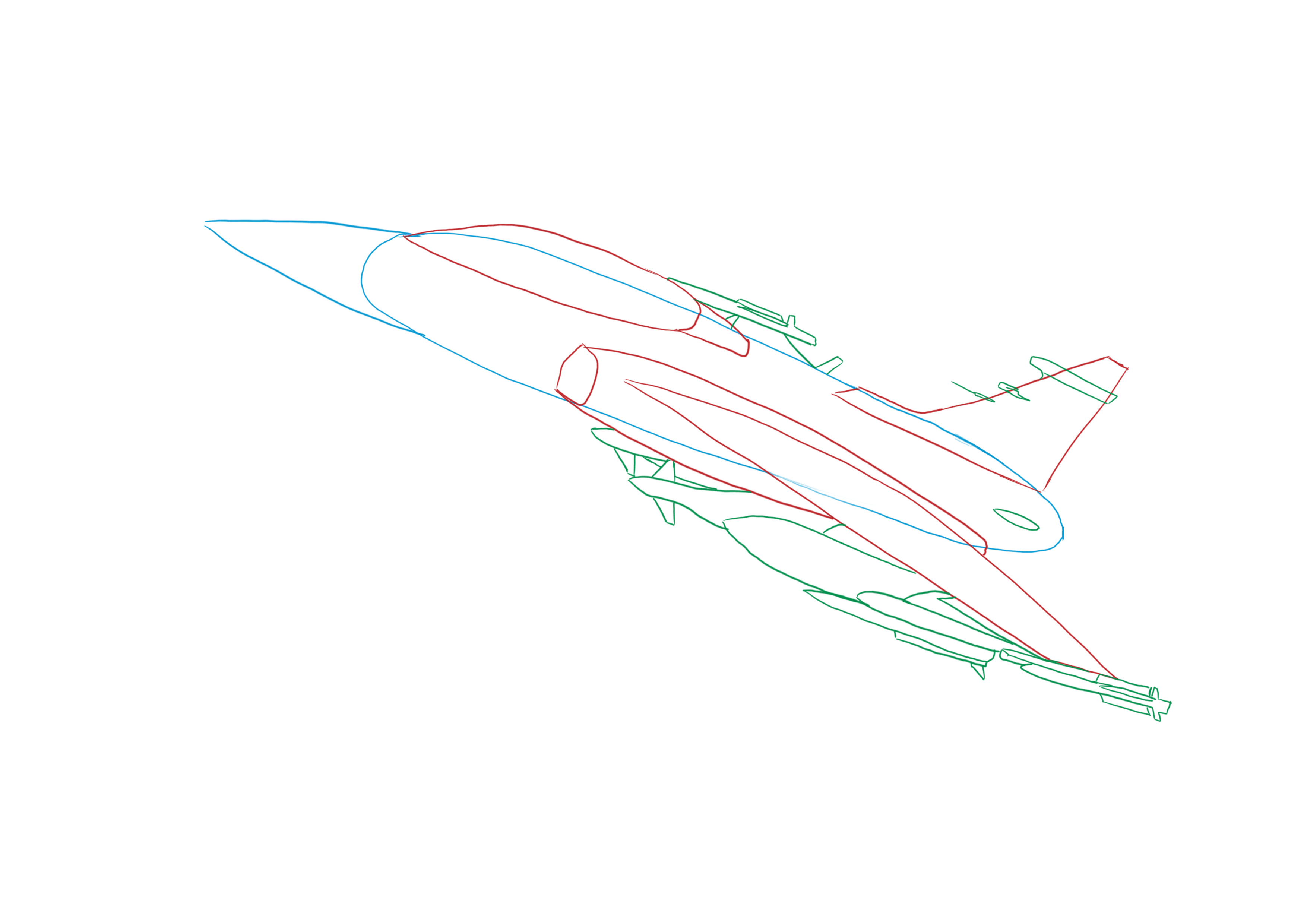
Now that the base is finished, move on to the line work. Go over your lines in black and take the opportunity to remove any that are unnecessary.
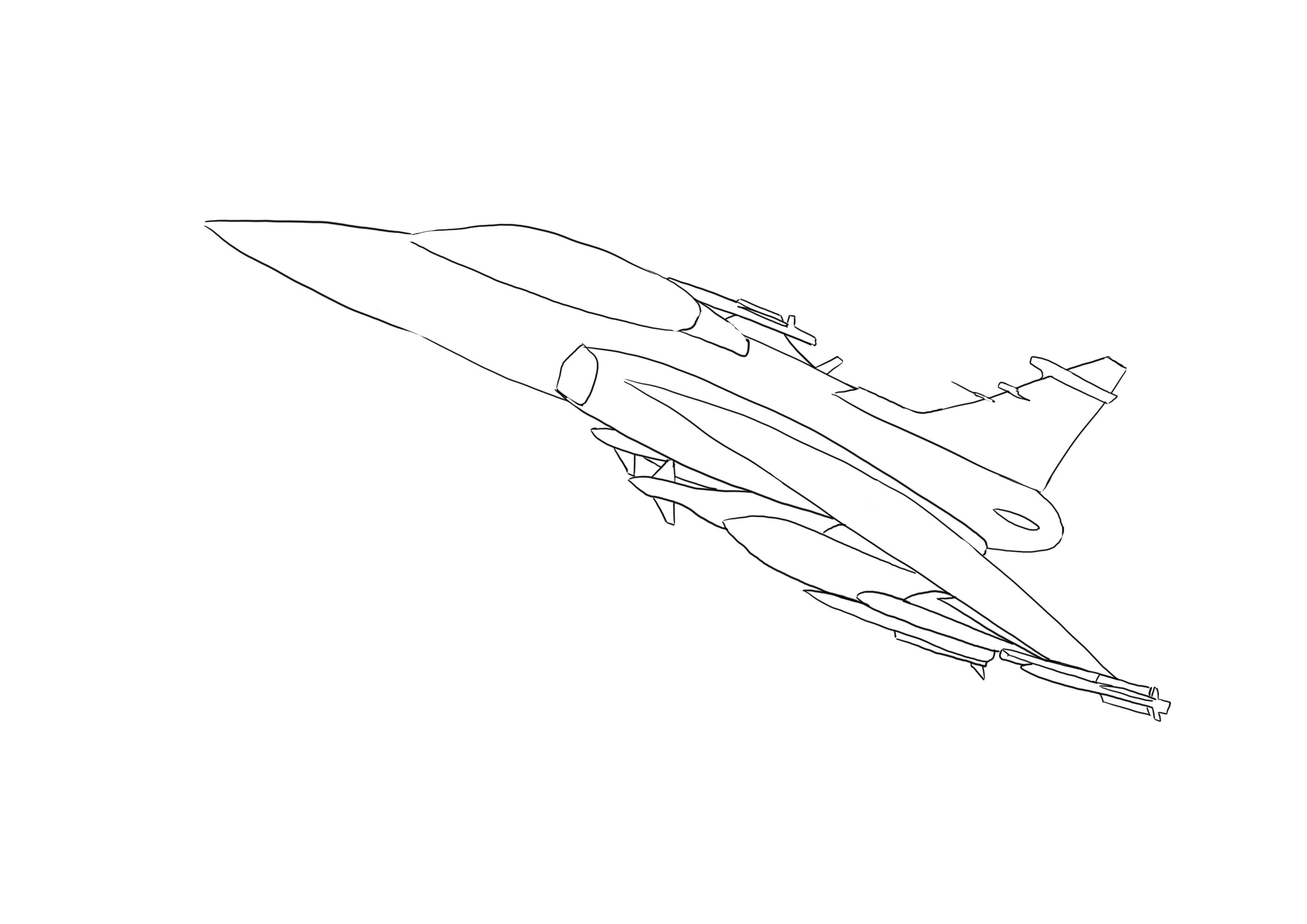
Still working on the lines, add details to simulate textures. I've added plates, grooves on the plane to show that they are metal plates, some reliefs, and logos.
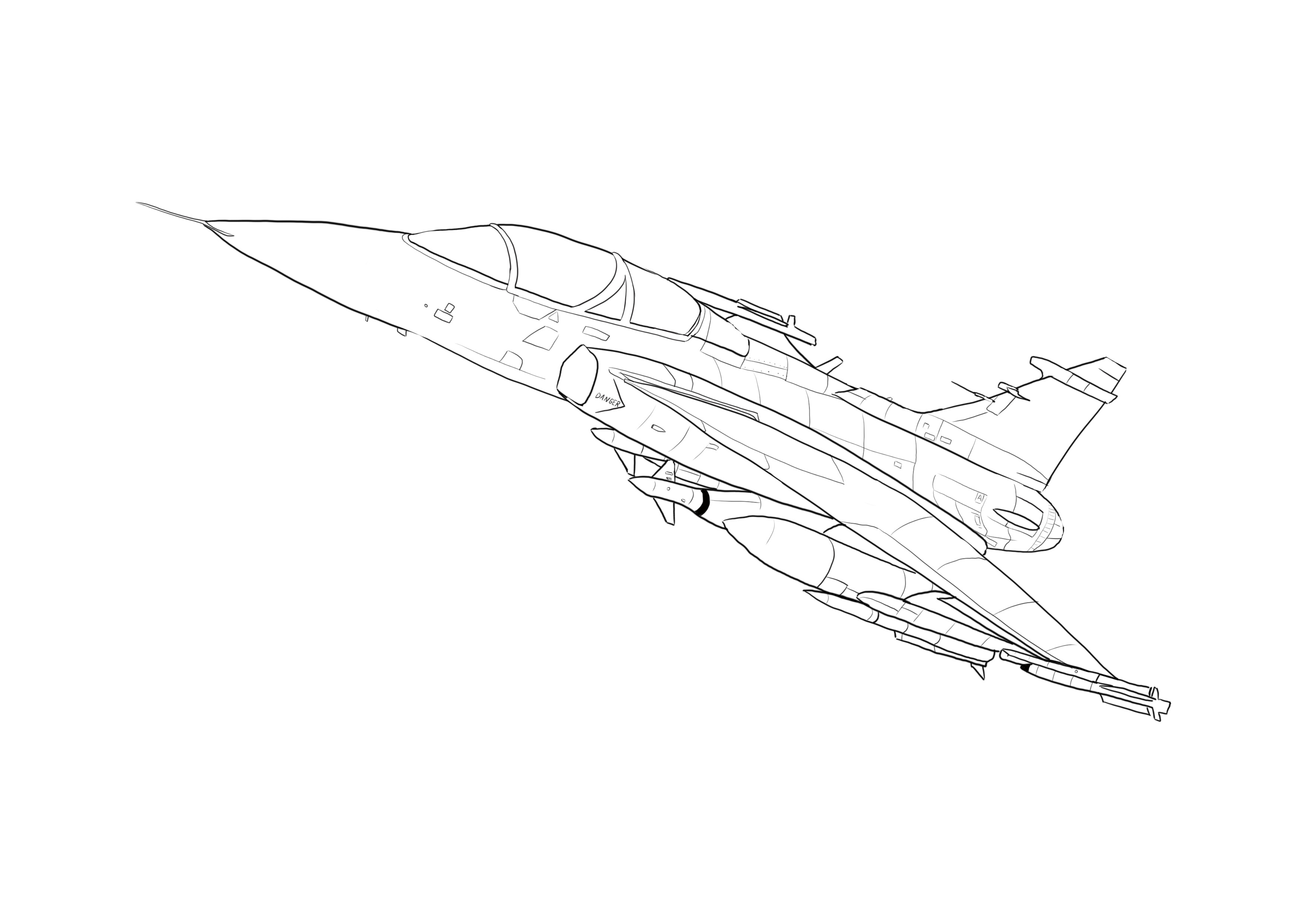
Generally, there is a symbol/design on the rudder. It's often the emblem of the company that owns the plane. You can draw whatever you want on it, enjoy yourself, invent your own badges, or draw a character or symbol that you like. As for me, I've opted for Pikachu. The idea just came to me suddenly, no judgement ... :p
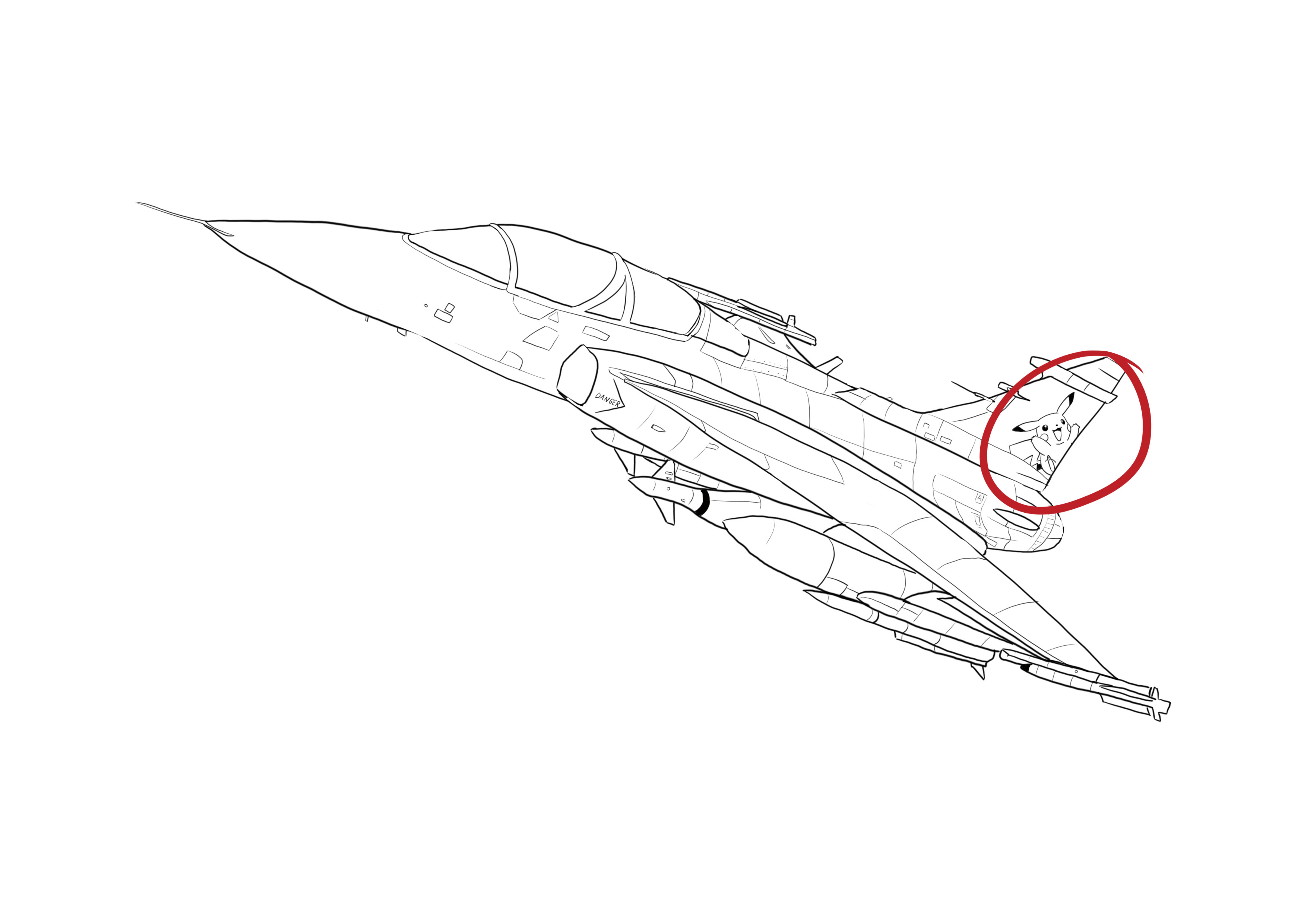
COLORING THE FIGHTER JET DRAWING
Once your outline is perfect, once you've drawn everything you want, and you're sure of yourself (or almost...) you can move on to the coloring stage. My plane will be gray, but will have some color due to the light reflections. To start, I color the entire plane with a medium shade.
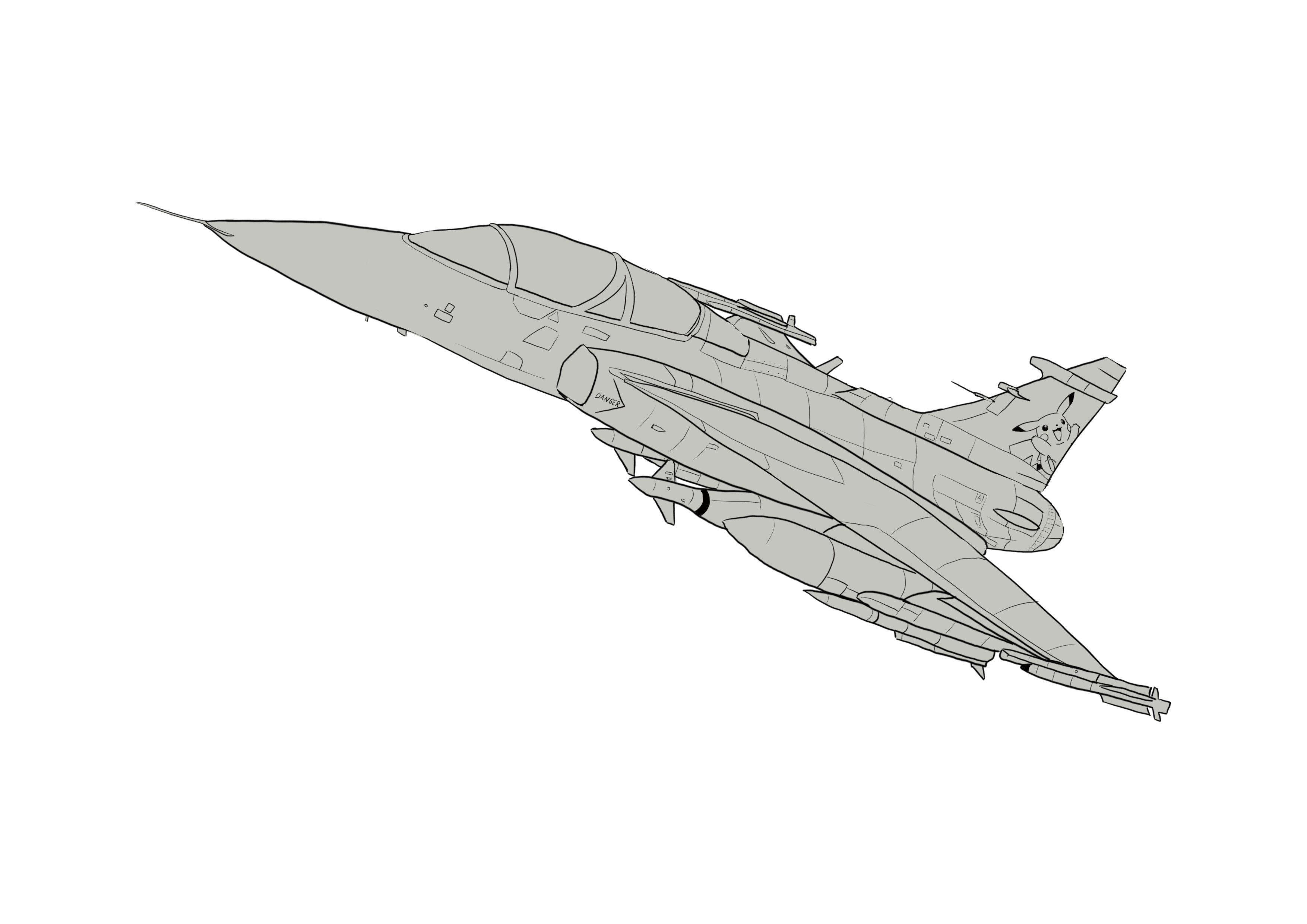
With a slightly darker shade, I add a first layer to create the shadows.
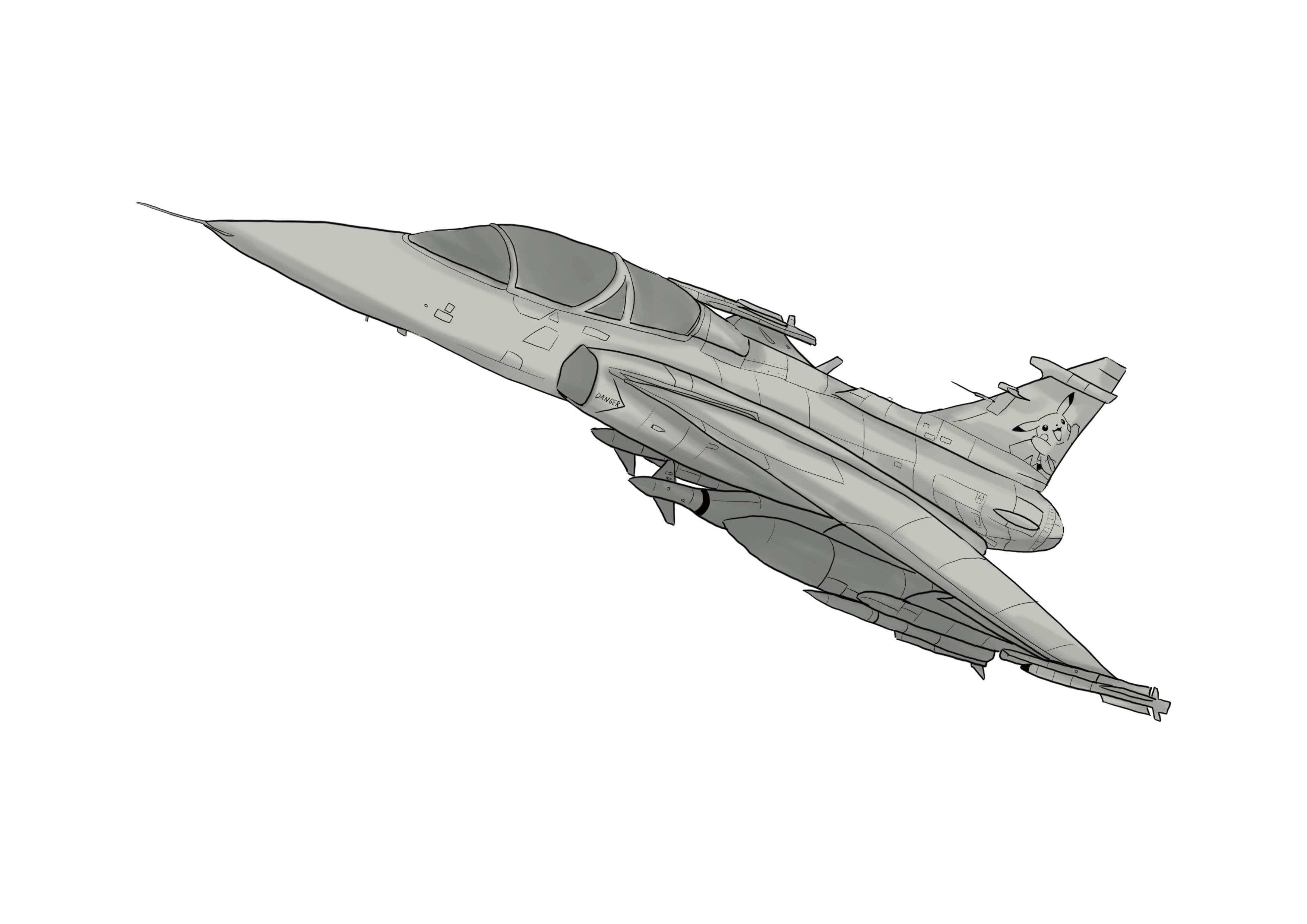
Then, using a very dark shade, I accentuate the shadows where necessary, especially in the corners and grooves.
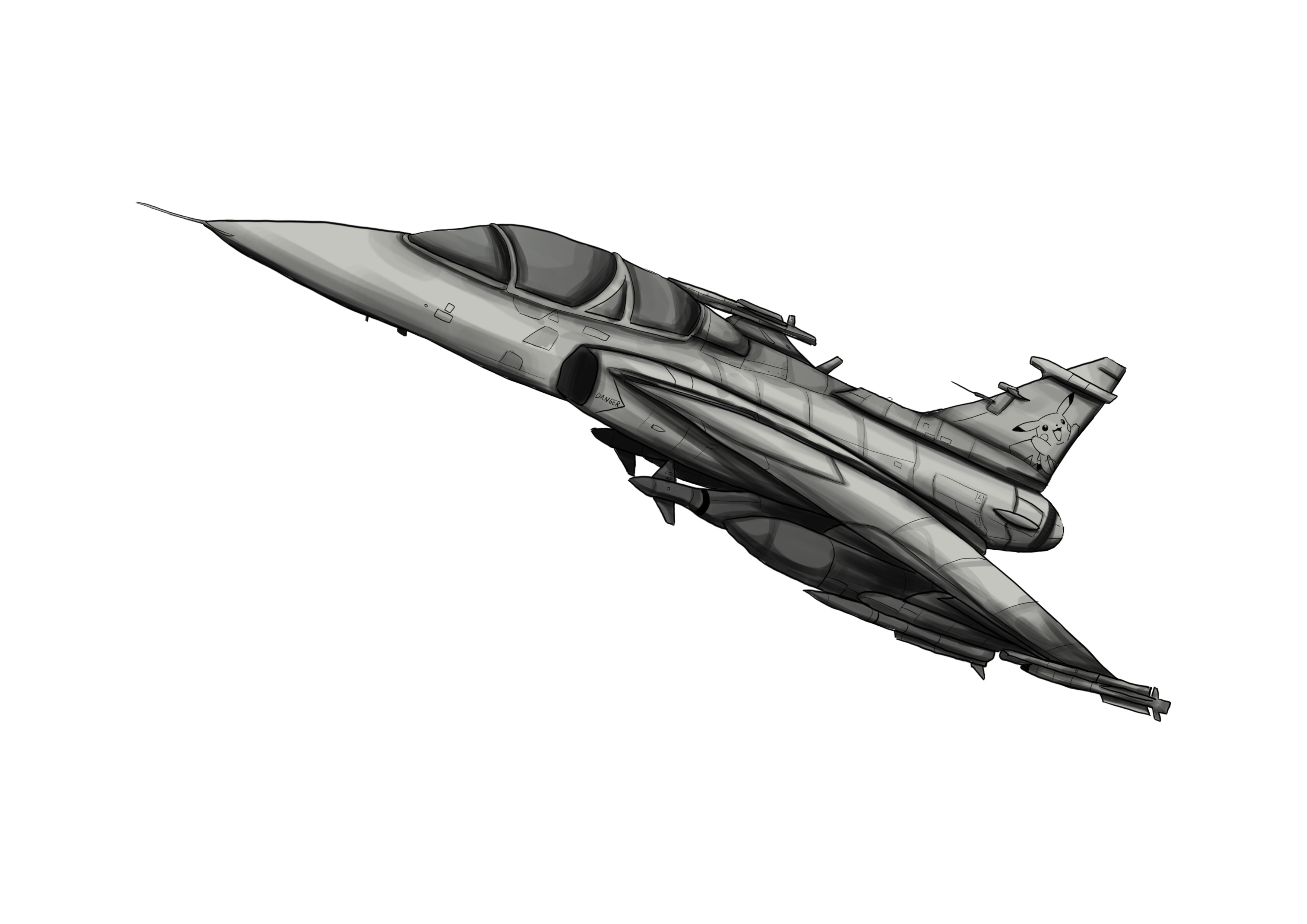
With a light shade, I will bring a touch of light to the plane by highlighting the raised areas.
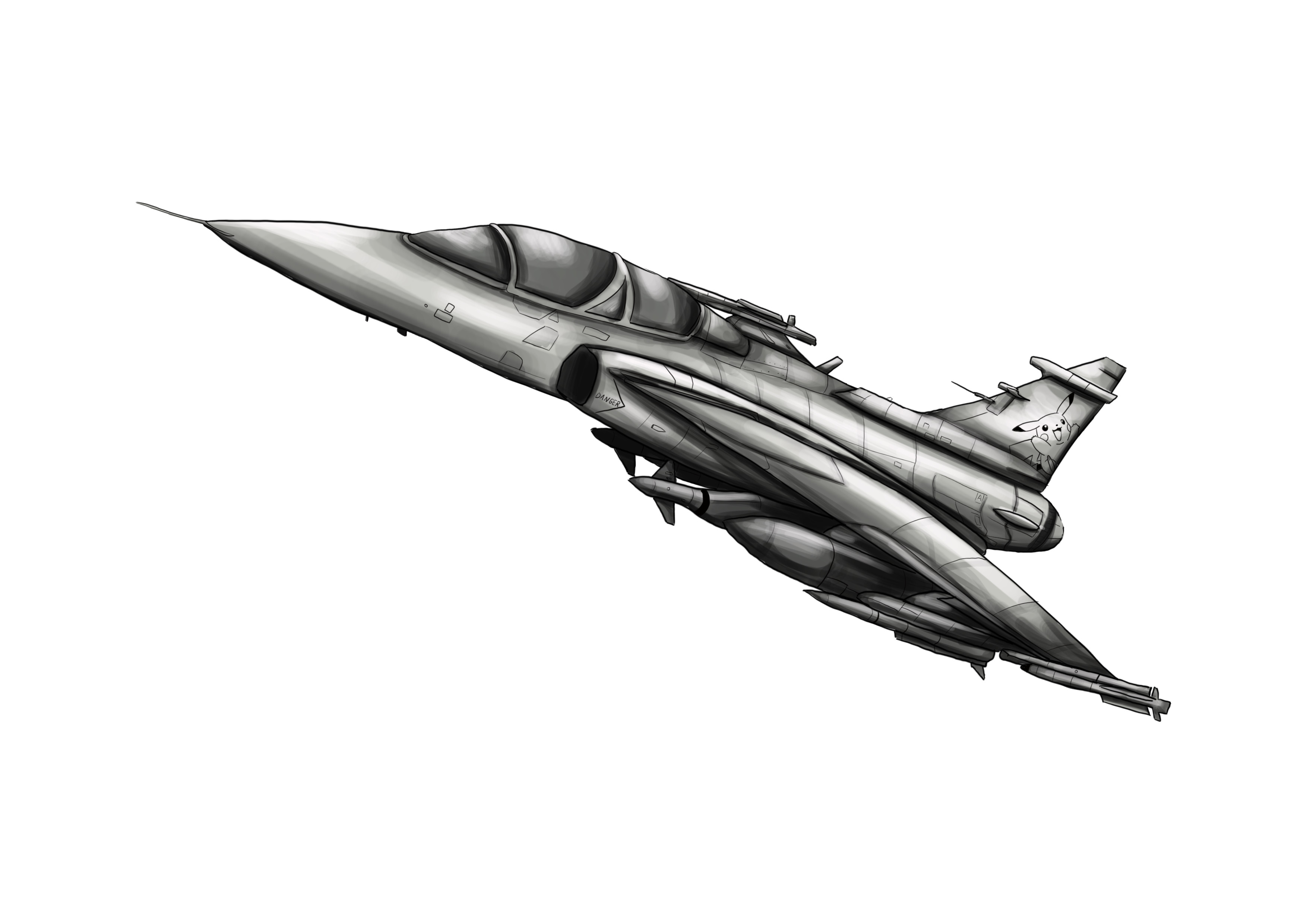
To finish, I add some color to bring the airplane to life. It looks like the sky is reflecting on it. So I add some touches of blue, pink, orange, and yellow. And I don't forget to add some colors to my Pikachu, but be careful, no flashy colors, the purpose of a fighter jet is to remain somewhat discreet! ;)

Your plane is now finished!
Don't forget to properly work on the shadows and highlights in your drawing as it changes everything and brings it to life! Also, take the time to draw your base; if your drawing doesn't work out, it's because the base wasn't good, so be patient and go slowly! :)
Illustrator and writer: Coralie

